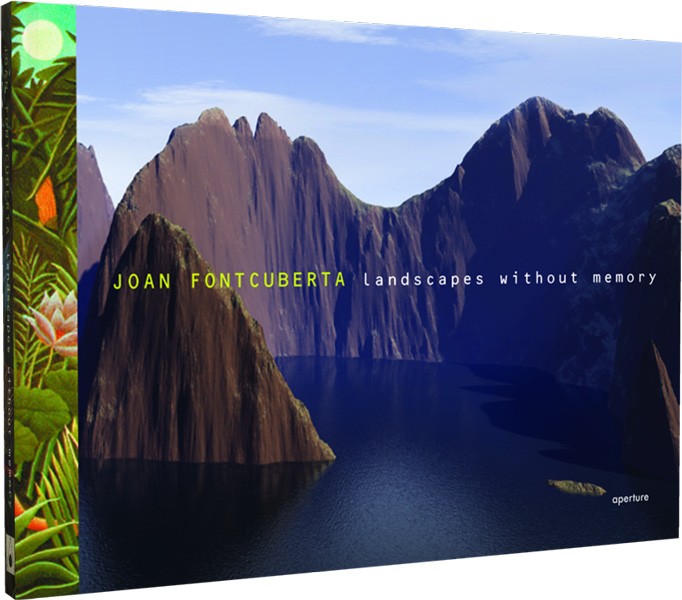Landscapes without memory is a book by Joan Fontcuberta who is best known for exploring the interstices between art, science, and illusion. In Landscapes without Memory, Fontcuberta has co-opted a piece of computer software originally designed for military or scientific use in rendering three-dimensional images of landscapes. The software enables the user to build photo-realistic models based on information scanned from two-dimensional sources—usually satellite surveys or cartographic data. The result gives the user the illusion of navigating in three dimensions which had previously been visualized only as a flat image.
Fontcuberta created the two series that constitute his Landscapes without Memory. In the “Landscapes of Landscapes” series, Fontcuberta feeds the software fragments of pictures by Turner, Cézanne, Dalí, Stieglitz, Weston, and others, forcing the program to interpret a variety of landscape masterworks as “real.” The contours and tones of these painted and photographic landscapes are transformed into three-dimensional mountains, rivers, valleys, and clouds. In the “Bodyscapes” series, Fontcuberta uses the same software to reinterpret photographs depicting fragments of his own body. The result producing a wild, virtual- fantasy world. 
The technical aspects to the include simply embedded images on the traditionally right hand side of the double page spread. For the most part, the images take up the whole A4 page with a landscape orientation apart from 4 images that take up only half of the A4 page. I think the idea behind taking up the full A4 sheet is to show how Fontcuberta feels the fantasy landscapes should be endless and carry on throughout the way. However this is juxtaposed with the knowledge that the consumers have in the way that there are clear deformities to our land where humans have destroyed it. The pages on the left hand side are not completely empty as they have a small print of the image that has been interpreted by the technology as well as some text. The text helps to further convey the narrative of the book and give some context too.


There are very few images in black and white which allow for a more realistic interpretation of the concepts. I think this helps the viewer to really connect with the pictures because we don’t view the world in black and white. All the pages in the book are consistent, using the same style of white paper which juxtaposes with the images which alter each page with contrasting environments and colors. There are a total of 96 pages including the pages with text and pictures which is supported by a hard cover. To me, this photo book is essentially a narrative about how the crisis of the landscape today is bound up with a sense of the loss of natural space.

This blog post is a little limited try and follow these instructions
3. Deconstruct the narrative, concept and design of the book such as:
Book in hand: how does it feel? Smell, sniff the paper.
Paper and ink: use of different paper/ textures/ colour or B&W or both.
Format, size and orientation: portraiture/ landscape/ square/ A5, A4, A3 / number of pages.
Binding, soft/hard cover. image wrap/dust jacket. saddle stitch/swiss binding/ Japanese stab-binding/ leperello
Cover: linen/ card. graphic/ printed image. embossed/ debossed. letterpress/ silkscreen/hot-stamping.
Title: literal or poetic / relevant or intriguing.
Narrative: what is the story/ subject-matter. How is it told?
Structure and architecture: how design/ repeating motifs/ or specific features develops a concept or construct a narrative.
Design and layout: image size on pages/ single page, double-spread/ images/ grid, fold- outs/ inserts.
Editing and sequencing: selection of images/ juxtaposition of photographs/ editing process.
Images and text: are they linked? Introduction/ essay/ statement by artists or others. Use of captions (if any.)